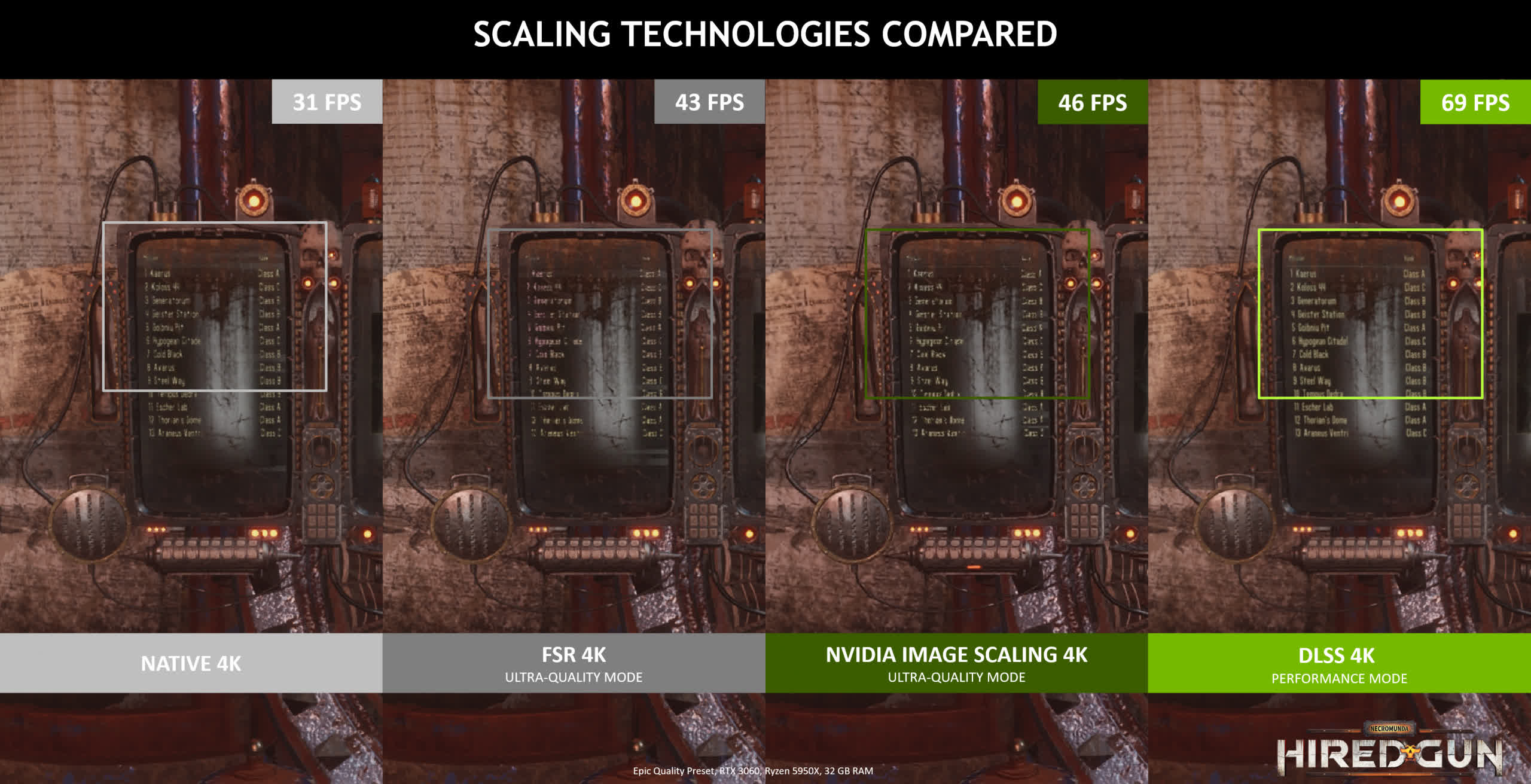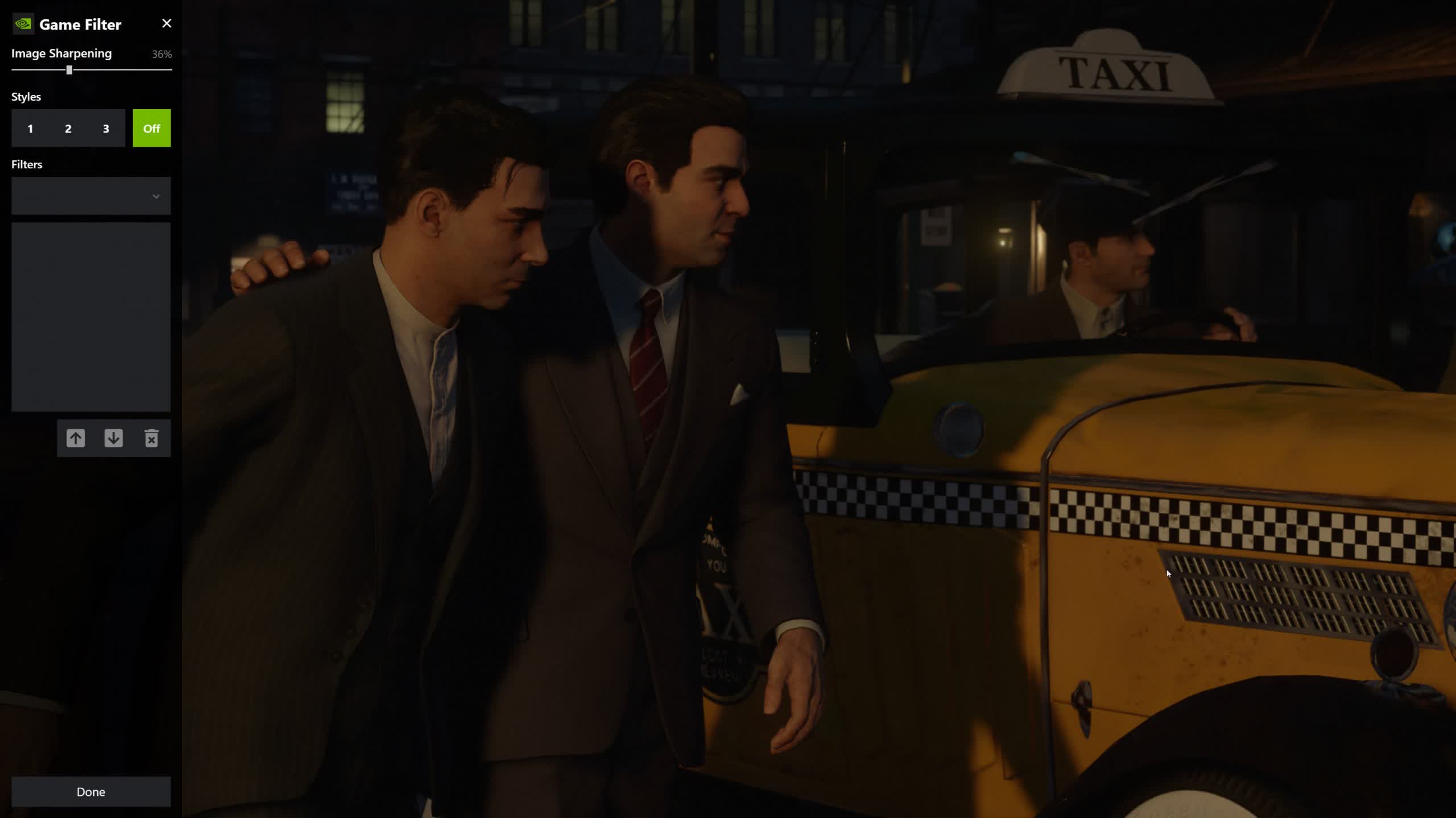The big picture: Nvidia's November 2021 update covers multiple subjects regarding what the company is doing with its image reconstruction technology. The main story is its upgraded image scaling tech, called Nvidia Image Scaling, which is being offered as an alternative to DLSS and AMD's FSR in hopes of gaining wider developer support.
There has been a lot of praise for Nvidia's DLSS – a feature that, in games which support it, makes lower resolution images look as good or better than higher resolution images, thus enhancing performance. This works through a combination of AI, the use of information from previous frames, and the tensor cores in Nvidia's RTX graphics cards. Analyses from groups like Eurogamer's Digital Foundry have maintained that users should always turn it on whenever available.
AMD's FSR also tries to boost performance by upscaling images from lower resolutions through methods like spatial upscaling and sharpening. It doesn't use AI or information from previous frames, but works on most GPUs whether they're AMD or Nvidia.
Comparisons between the two in games that support both have noted that FSR is simpler and in the end, less effective. Still, several big-name games as of late have opted to support FSR before adding DLSS, or instead of DLSS. Examples include Far Cry 6, Deathloop, Resident Evil Village, and Back 4 Blood. This is likely a result of FSR's less strict requirements and AMD making it open-source, so anyone can potentially implement it.
Seemingly in response, Nvidia has announced it's adding more functionality to its existing image scaler. This isn't DLSS, but rather a simple upscaler similar to FSR that now has an improved sharpening algorithm with a six-tap filter, four directional scaling and adaptive sharpening filters.
Nvidia Image Scaling is activated in the Nvidia control panel under "Manage 3D settings." Once enabled, it'll add five new resolutions selectable via in-game settings menus, based on a percentage of your display's native resolution, from 85 percent down to 50 percent. Notably, the latter isn't available for 1080p monitors.
Once a user selects one of those resolutions with a game in fullscreen mode, Nvidia Image Scaling should upscale from that to the display's native. If a game doesn't support fullscreen, a user can simply use Nvidia Image Scaling to change the resolution of the desktop.
Nvidia Image Scaling even has an in-game overlay that should show the results in real-time. It's done through GeForce Experience, which can also be used to configure Nvidia Image Scaling. Pressing Alt+F3 while playing a game will let you adjust the amount of sharpening while playing and immediately see the difference.
Nvidia even offers its own extensive comparisons between Nvidia Image Scaling, FSR, and DLSS. The company clearly wants developers and players to use DLSS, which comes out looking the best in all the comparison shots. Nvidia Image Scaling, on the other hand, looks very similar to FSR when all three methods are compared in Necromunda: Hired Gun. In the other comparisons, Nvidia seems to group FSR and its Image Scaling together under the name "spatial upscaling."
Like FSR, Nvidia is making Image Scaling open-source, so it could certainly end up being supported on AMD and even Intel's upcoming graphics cards in the future.
Alongside showing off its new scaling tech, Nvidia also announced DLSS' upgrade to DLSS 2.3, which is supposed to improve on some of DLSS' flaws. Games using DLSS are sometimes known to introduce a ghosting effect due to how the feature handles a game's motion vectors. The PC version of Death Stranding is a good example.
Nvidia claims to fix this with DLSS 2.3 to reduce ghosting, pointing out Cyberpunk 2077 as its example. DLSS 2.3 should also improve particle reconstruction, which Nvidia showed off in Doom Eternal.

